Despite what season it is, it’s best to keep the pool maintained to avoid stains, scale, algae and other surface problems, in addition to structure and equipment issues. If it is warm enough to keep your pool open this winter, check out these tips to help you stay on top of pool maintenance this season.
Running the Pool Pump
How long should you run the pump during winter? Many sunbelt pool owners reduce filtration during the off season to lower energy costs. But be careful not to go too low!
Circulation is important if you keep the pool open. Let the pump run as long as it takes for the water to cycle through the circulation system. This is known as the turnover rate. Generally, pumps need to be run for 6 to 8 hours at a time for proper circulation.
Debris
Another factor to consider when running the pump is debris. If debris is an issue in your pool, you may need to run the pump longer. Running a pump for only 3 hours every 24 hours means there are 21 hours for debris to build up.
Weather
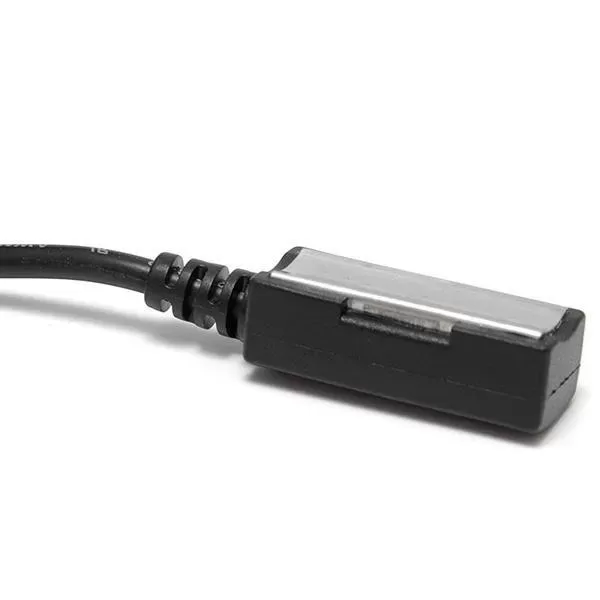
A third factor is the weather. Outside temperature will affect how long you run your pump. At temps above 65ºF, you need longer daily operation. And, at temps below 35ºF, run the pump for 24 hours to prevent freezing.
Two speed pumps can operate on low speed during cold weather, and some variable speed pumps even have built-in freeze sensors to turn on low when temperatures get close to freezing.
Another option is to add the Intermatic digital timer. This digital timer is the first to adjust automatically for off-season demand, by reducing run time during colder months. It works on single or dual speed pumps, and allows you to control another device, such as a booster pump or pool light. With the Intermatic freeze sensor, your digital time clock will turn on the pump automatically when the weather gets cold.
Winter Pool Chemistry
Even though no one is using the pool, it’s still important to test the water with test strips or test kits, to find out what you need to add to the pool – primarily chemicals to adjust the pH, alkalinity and calcium hardness levels.
Ideal winter pool pH is between 7.4 and 7.6. Add pH increaser if it is under 7.4, and if higher than 7.6, add pH reducer to the pool water. Ideal total alkalinity levels are 80-120 ppm, and winter calcium levels are between 200 and 400 ppm for any type of pool. Add calcium increaser to increase the hardness level.
Swimming pools need essential chemicals to maintain the health of the water. Test your water regularly during the winter — at least monthly — to protect your pool surfaces from stains and scale.
Winter Freeze Alerts
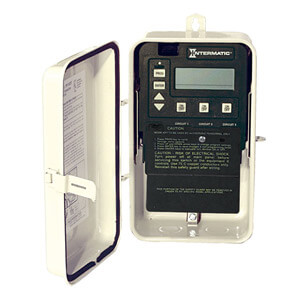
When temperatures drop below freezing, your pump needs to be running. To stay on top of these things, consider a system to notify you of freezing temperatures.
You can set up alerts from the Weather Channel to send a text or email to your mobile device about freezing temperatures and other severe weather alerts. Sign up for their free text or email weather alerts.
Or, you could add the Intermatic P1353ME digital timer, which can add a temperature sensor to the circuit. This will turn on the pump when temps get close to freezing, automatically. Runs up to three circuits or devices, programmable for any on-off times you like.
Winterizing a Sunbelt Pool
If you are unable to maintain the pool, you may be better off closing the pool, so you don’t have to worry about it. For many sunbelt pools, just covering the pool and removing the pump and filter drain plugs is sufficient. If you are wondering how to close and winterize the pool for the season, here’s a quick rundown. For more, see our other many blog posts on how to winterize a pool.
Add winter pool chemicals, then lower the pool water below the base of the mouth of the skimmer. Your filter pump may lower the water, or you can also use a submersible pump. Cyclone blowers or a large vac/blower can be used to blow out the lines. Start with the main drain and the skimmers, and then blow air through the pump and the filter and back to the return lines. Once the air is blown out, you can use your winterizing plugs to plug up and seal the pipes for winter.
Pool antifreeze is helpful for the pipe for any water that may still be in the pipes. Pool antifreeze will protect the skimmer from freezing water that accumulates from winter rains.
Swimming Pool Covers
Swimming pool covers are not required for pool winterization, but they have advantages. Solid winter or safety covers help prevent algae growth by not allowing sunlight to peek into the pool water.
Because pool covers fit securely over the pool, you likely won’t be using as much chemicals to maintain it, which saves you money. Your pool will stay clean, and it may help reduce the risk of organic staining. Safety pool covers also add protection for curious animals or toddlers. If you’re still planning to use the pool occasionally, and a winter cover or safety cover isn’t ideal for your situation, you can still reduce weekly cleaning and maintenance time by using a solar cover. Not only will a solar cover add some heat to the pool, but it’ll also help keep dirt and debris from landing in the water.
Whether a pool owner decides to close the pool for the season, or keep it open – weather permitting – you will want to remember to maintain the pool and the water. Winter neglect can damage pool surfaces and equipment, or make extensive and expensive water clean up.
There are several things you can do to keep your water and pool healthy and clean – no matter whether the weather allows you to keep the pool open.

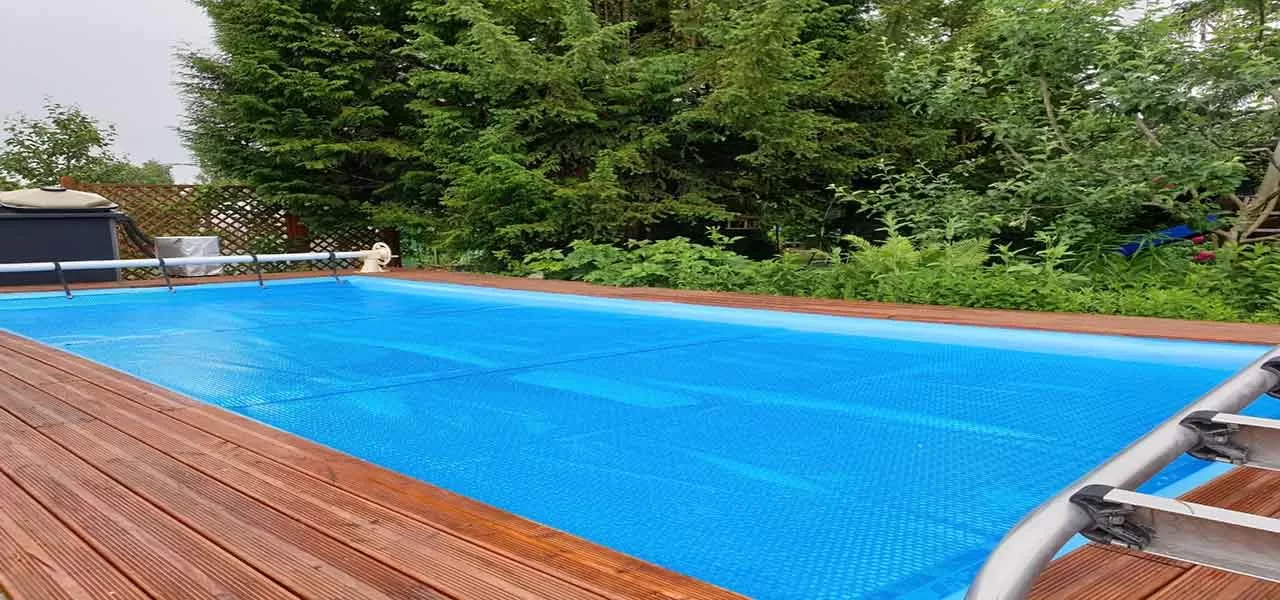

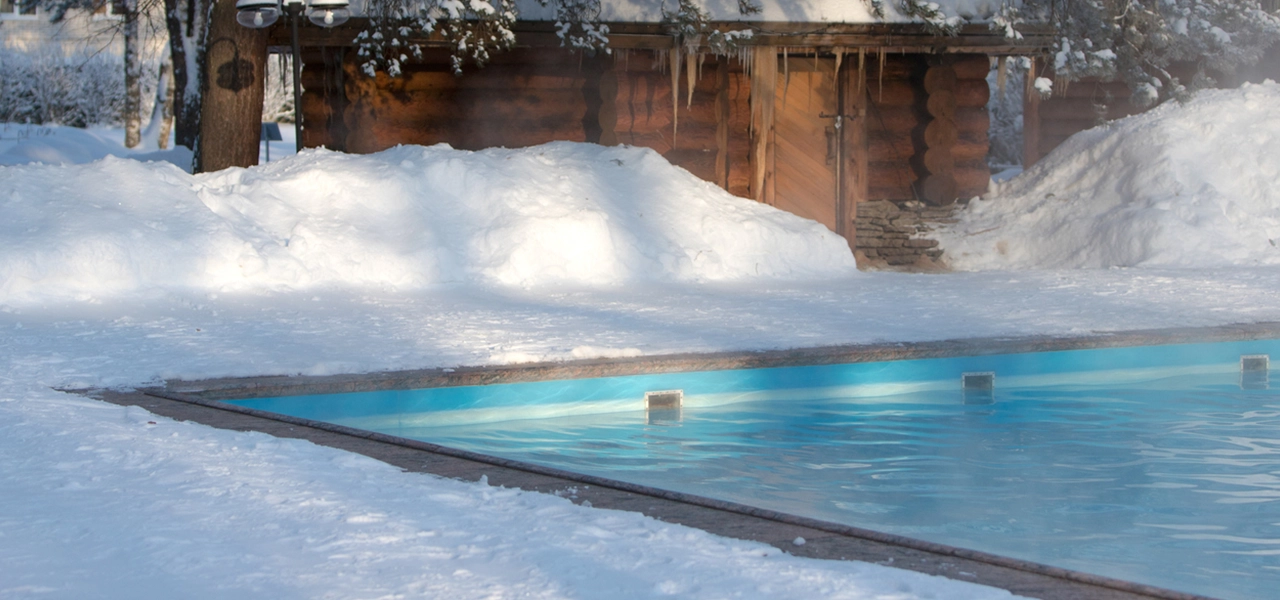
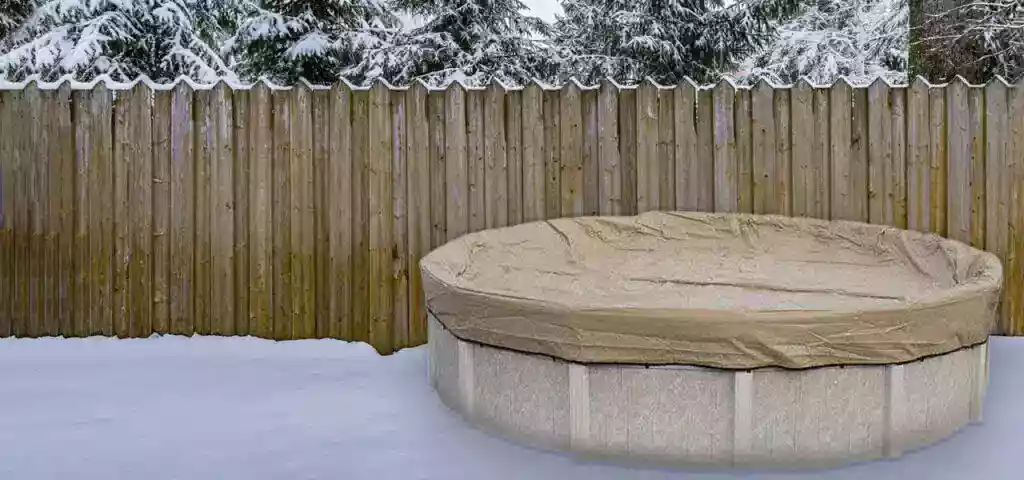
I live in New Jersey and have a above ground pool. For winter I want to cover the pool and run the Hayward sand filter and pump 2hrs a day. I am using a wintering pool kit, with air pillows. Is this ok? Thank you
Hi Steven, your pump and filter will freeze and crack open during the night, around Halloween time. Better to winterize the pool, or you’ll need to keep the pump running every time the temperature gets close to 32 degrees. You could however, cover the pool and run the filter until Halloween, then winterize (lower the water level, plug the lines, and drain the hoses, pump, filter, etc). Then in late spring, a month before opening, you could do the same thing, raise the water level and run the filter a few hours daily, with the cover still on the pool.
I live in las vegas, and I have a Pentair VSP pump. Right now I run the pump at 2500 rpm from 8am to 5pm and the water is really clean.
I would like to know If I can run the pump 24 hours a day at 1200 rpm and if you think that would be ok or not ok. That way I would not have to adjust from winter to summer and I can add chemicals at night and wont have to worry about water freezing.
Thank You
Hi Kevin, one of the best ways to use a VS pump is to run it for low-speed 90% of the time, and for just 2-4 hrs per day on high speed – for skimming, cleaning, sanitizing and heating needs. So yes, try it 1200 rpm for 22hrs per day, and full speed (3500 rpm) for 2 hours each day. As we get further into summer, and water temps increase into the 70’s, increase the full-speed runtime to 4hrs, more or less, as needed. Every pool is different, so experimentation will find the sweet spot for your pool circulation and filtration needs.
Davy, this is a great blog topic. Thanks for all the excellent information. We live in Jacksonville, FL. Have a 17K gal. in-ground pool and multi-speed Intelliflow pump. How many hours weekly and what speed should we run the pump? Depending on the weather it may not be warm enough until June before it’s warm enough to swim.
Hi Cabby, Jacksonville is not as warm as other parts of the state, freezing temps are common in winter, as you know. Because of this, you will want to make sure that the built-in Freeze Protection is enabled, to turn the pump on when temperatures plummet close to 32 degrees. You can set the temp trigger to 40 deg, and set the speed to default 1000 RPM. For general pump operation, in higher temperatures, I would advise 2 hours per day at high speed, and 2 hours per day at low speed, and see how that does for you. Check on the pool often to see if it needs more filter run-time, looking for cloudy water or a dirty pool with debris on the floor. You can run it mostly at night, if electricity is cheaper, but some of the run-time should be during the time of day when the sun is directly overhead. Remember that for clean/clear water you need 3 things, circulation, filtration and sanitation – even when the water is cold, you just need less! Every pool is different with the needs for these three, and it also depends on the weather, temps and amount of debris introduced to the pool, which will change from month to month. Experiment with your own pool, and you will find the sweet spot! Thanks for the question!
We get a lot of leaves. During winter is it okay to just circulate with mains drain only?
Hi Brad, yes you can circulate with just the main drains only, keeping the skimmers closed. However, it does create more work on the pump, and may cause some small amount of cavitation for pumps running at full speed. Cavitation means ‘starved for water’, and is evident by a growling noise, and a pump basket that does not fill full of water. Over time, it can create stress on the motor, and could contribute to premature failure. It also creates more Work for the motor, increasing power costs/consumption slightly. Also, if you run with just main drains open, the leaves will soon cover the main drains, blocking water flow and making the above problems worse. IF the problem is that the leaves fill up the skimmer baskets, creating a lot of work with emptying every day, you may want to consider a product called the Leaf Bone which may be helpful, or look at SkimPro skimmer baskets, which don’t clog-up easily. Leaf Catchers could be another solution, a mesh net spread over the pool during fall and winter.
Good afternoon,
We live in (Very) South Texas and have a “low debris” pool and patio. What is a good amount of hours that our pump should be running within a 24 period. Very low usage also for the next few months.
Hi, a simple way to determine run time is by average daily temperature, or by water temperature: Something like this perhaps ~
70’s – 8-hours+
60’s – 6-hours+
50’s – 4-hours+
40’s – 2-hours+
30’s – 24-hours!
I live in S. Texas as well, thanks for the helpful information! What RPM’s do you think the pump should be run at during cold temps? We’re in the 30’s now and it is supposed to dip down to the 20’s. I wouldn’t imagine it needs to run at high speeds right?
HI Nancy, not at all – it can run at a low speed, just as long as the water is moving, and all the valves (pipes) are open, it won’t freeze. I maybe would not advise the LOWEST speed, but need not be high speed during freezing temps.
I have an in ground pool and am about to close it for the season. I live in the Atlanta area and have been approached about having the pool closed. They say for $ a month they can come by every month and treat the pool so it’s not green when we open it next year. The pool is covered, I lower the water past the skimmers, shock it the a few days before closing then add an algae side. How do they keep it from turning green when the weather fluctuates so much here? How do they get chlorine in when closed?
Hi Sondra, they can simply pull the cover back to expose the pool along one long side, then check the chemistry and add either chlorine, algaecide or other treatment to keep the algae from forming. Most algae growth that you see during opening occurs in the 6-8 weeks before opening. During the very coldest winter months, algae will not grow. In Atlanta, the winter can be short, and fall and spring long – so extra treatment would be needed, unless you close the pool very late and open very early.
So they pull the cover back, check chemistry and run the pool with only the bottom drain open? Both of the skimmers will be shut/plugged and the water will be lowered. So I guess they can do this. I appreciate your quick response!
Well, they probably don’t run the filter, if it is winterized, because then they would have to re-winterize it on each visit. They probably come with some manual cleaning tools, and maybe do a quick vacuum to waste, brush and skim, add some chemicals, and cover it back up tightly.
I have a water feature with a pool pump. I live in the desert and will be closing it down for summer. I’ve drained the feature.
Is it better to leave water in the pump over the summer or should I drain it? It obviously won’t be freezing but I don’t know if leaving it dry will harm the seals or other components especially with our extremely dry air.
Hmmm, good question, I’m not sure if it matters, but maybe having some water in the pump may be better than none, to keep the seal rubber from getting too hot and drying out…?
It rained 10 inches over 4 days in my hometown. We did not cover the pool for the winter and now the pool is so full that we cut the pump off. How long can the pump stay off without damaging the pump or sand filter?
Hi Breeze, the pump should be running if water temperatures are going to be below freezing, or 32 deg F, if that’s what you mean. You may have a drain to waste position on your sand filter valve, that can be used to lower pool water level.
We recently moved to Las Vegas and this is our first pool. Weather forecast is for three nights of hard freeze this week, so yesterday I re-programmed the schedule at the keypad to run for 10 hours, beginning at 9 pm each night. However, tonight the pump seems to be cycling on and off, with the display reading “FRZ” (which I think means that the freeze protocol has taken over). I’m not sure if my programming was unsuccessful, if the cycling pump is normal and will prevent problems, or if something has happened that needs to be repaired. Can you help me understand this situation?
Hi Chris, a cycling pump – one that is surging or alternately pumping water and not pumping, only catching prime for short periods of time…. is not normal.It can be from low water level, stuck skimmer weir, toys in skimmer or clogged pipes or baskets, some obstruction, usually on the suction side of the pump. Air leaks are often the cause, from a loose pump lid, or loose pipe coming into the pump. FRZ is likely just letting you know that it is in freeze mode, or continuous run mode, until temps rise.
I live in Houston, and in the winter, my in ground pool temp is around 55 degrees. It is in direct sun for about 3-4 hours in the afternoon until spring. What is the minimum amount of time that I need to run the pool daily when it is not being used? It is not covered, and I am not including vacuum time and such.
Hi John, great question thanks! At a water temp of 55 degs, not much will grow, but you still want to avoid staining, and keep the water clean and clear. The answer really depends on the efficiency and effectiveness of your pool filter, and the turnover rate or how many hours it takes the pump to move all of the water in the pool, but generally speaking, 2 hrs daily should be sufficient. When weather warms the water to 65 degrees however, 4-5 hours per day should be necessary, so you will want to monitor it come springtime, either by water temp or keeping a close eye on water quality. Also, be sure to test your pH and alkalinity levels regularly, and add chlorine as well – shocking the pool every few weeks, or maintaining a low level daily residual.
I’m a little confused. I’m in Sacramento, CA and covering my in-ground pool for the winter. The instructions for the cover and several articles I read say to lower the water level below skimmer.
If water level is below skimmer, it’s too low/it will ruIn the equipment to run the filter at all, won’t it?
Hi Patty, for most folks that winterize the pool, lowering the water below the skimmer is part of the process. If you don’t plan to winterize, but want to run the pump for one day each week, or a few hours per day, keep the water level normal, so the skimmer won’t suck-in air. If keeping the pool operational, just be sure that the pump is running whenever temperatures dip to the freezing range. As long as all valves are open and the pump is running, nothing will freeze and break, even below 32 degrees. If the pump should suddenly fail before or during a freeze, remove the pump and filter drain plugs, to drain down the above ground pipes and equipment, until repairs can be made.
I have an inground pool and live in Charlotte NC.
I have been covering the pool in the Winter. This is the first year I am using a solid cover that sits on top of the water and is held in places with the water bags.
Do I need to run the pump or is leaving it on freeze protection enough?
I usually put chlorine tablets in the skimmer baskets but that only works if pumps is left on.
Hi Anita, with a good solid cover blocking all the sun and rain, you don’t need any filtering at all, with exception to freezing temperatures -and- temperatures above 70 F – which can warm the water enough to consume chemicals or grow algae. So you may want to run the pump a little bit this month, and then once temps stay cold in Charlotte, you can just leave it on freeze protection. And yes, only use chlorine tablets in the skimmer basket if you run the pump 24/7 – otherwise it can cause major problems. For winter, you can use the Jumbo Chlorine Floater with the baffle vents on the bottom fully closed.
I have an above ground pool and cover it in fall/winter. How long will it need to run each day or week to avoid problems?
Hi Joann, if you do not winterize the pool, but have it covered and treat the water with a winter kit – you may not need to run it much at all, but since you probably have a daily timer clock, I’d set it to come on for 1-hour daily. Or you could just run it for 6-8 hours during one day per week. If outside temps are above 70° F, you may want the pump running 3-4 hours daily, to keep algae from growing. If temperatures get close to freezing (32° F) however, be sure that the pump is running, and all valves open, to prevent freeze damage.